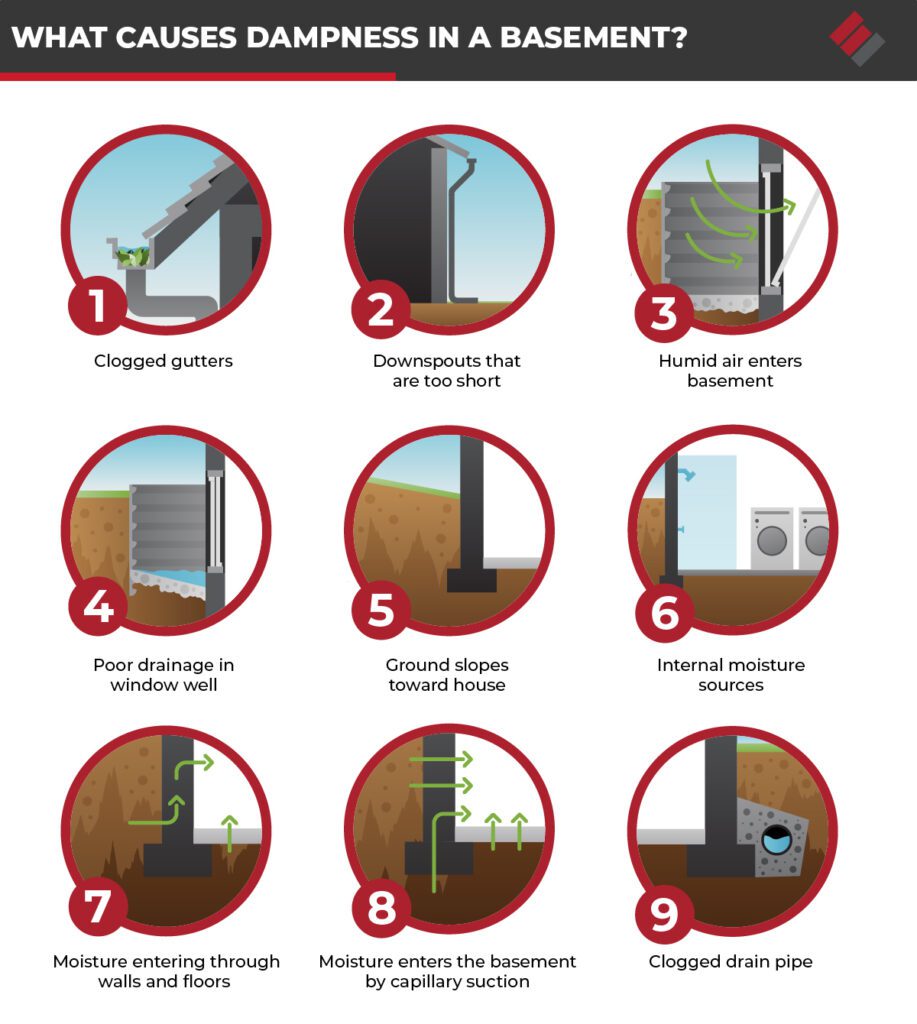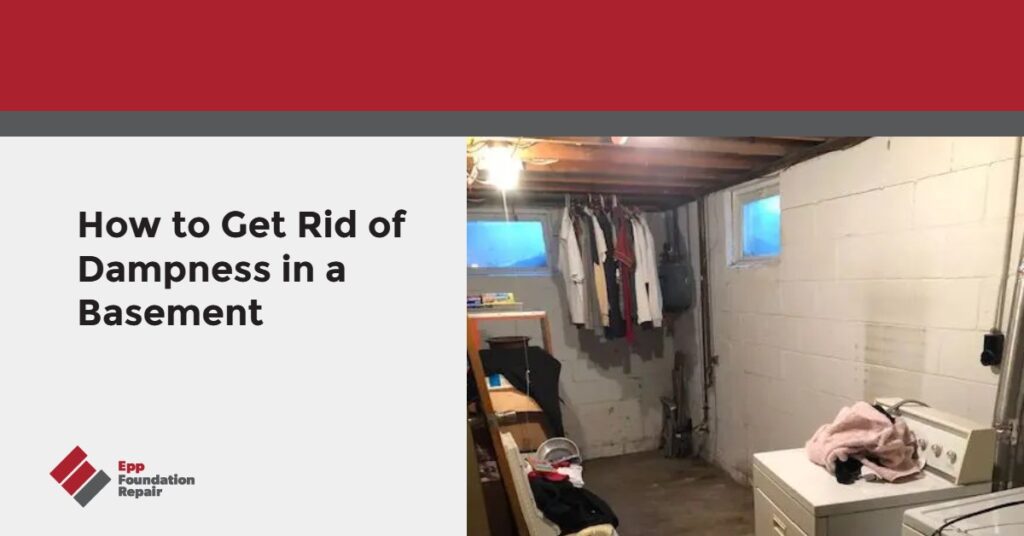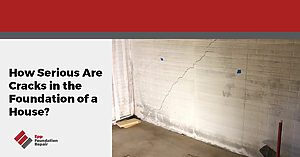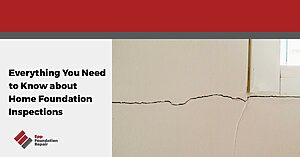Are you searching for information on how to get rid of dampness in a basement? If so, don’t hit that back button because you’ll find what you need here in this short article.
Dampness in basements is common because basements are surrounded by soil. Most people think dampness in a basement is inevitable. You know, it’s a basement, so it’s supposed to be damp, right? Not so. Achieving a basement dry enough to live in is possible with the right waterproofing system, and that’s what we’re going to talk about.
This article will go over what causes dampness in a basement, the signs of a damp basement, and how to get rid of dampness in a basement.
What Causes Dampness in a Basement?
Dampness in a basement doesn’t necessarily mean pools of standing water. There might be just a feeling of dampness or a bit of condensation on the walls. A damp basement is almost always caused by one of the following:
- Water in the soil outside the foundation walls – If there’s enough water outside your foundation walls to dampen your basement, you probably have excess moisture from somewhere (leaky pipes, improper grading, clogged gutters, or downspouts?) coupled with poor drainage around the foundation. This can cause hydrostatic pressure to build up, and if it’s not relieved, it could push water through invisible cracks in the wall and into your basement. Hydrostatic pressure can even cause basement walls to bow inward and crack.
- Moisture created by using clothes dryers, taking showers, cooking, etc. – All those things create moisture, and if you’re doing them in your basement without vents or fans, it’s going to increase the dampness in your basement.
- Humid air flowing into the basement via open windows – Basements are cool, and condensation forms when warmer air flows in and meets cool walls or other structures.

Signs of Dampness in a Basement
Apart from the obvious pooled water, common signs your basement is damp include:
- Visible mold on walls and floors
- Walls feel cold
- Efflorescence – This is a sign of water intrusion into the basement. When it dries, minerals are left behind that look chalky.
- A damp ring around the bottom of the basement wall
- Peeling paint or wallpaper
- Condensation on the walls, floor, and other structures
- Water stains on walls or floors
- A feeling of dampness
- A musty smell
- Problems with flooring – This could be moldy carpeting or something else.
A Drain Tile System Is the Best Way to Fix a Damp Basement
Moisture created by cooking or showering is pretty easy to get rid of using proper venting along with exhaust fans. However, getting rid of basement dampness caused by excess moisture in the soil outside the foundation wall is more tricky. Many homeowners attempt to tackle the problem by simply applying a waterproofing coating to the inside of the basement wall. This isn’t enough. A waterproofing coating is simply a barrier put up to keep water out. It doesn’t solve the root problem of excess moisture in the soil around the foundation. Eventually, the waterproofing coating will fail, and you’ll be back where you started. Solving the root problem requires the installation of a drain tile system.
How a Drain Tile System Works
There are two types of drain tile systems: exterior, which is installed around the outside perimeter of the foundation at the footing level, and interior, which is installed around the inside perimeter of the basement. They both work by collecting excess water in the soil and directing it toward a sump pit, where it’s then released away from the foundation via gravity or a sump pump.
For more information about how drain tile works, see How Does A Drain Tile System Work? and Basement Drain Systems: The Secret To A Dry Basement.
Other Things Homeowners Can Do to Combat Dampness
While a drain tile system is a gold standard when it comes to basement waterproofing, there are other things you can do that will help minimize dampness in a basement:
- Use a dehumidifier.
- Use exhaust fans if you’re cooking, doing laundry, or showering in the basement.
- Make sure there’s good air circulation in your basement.
- Keep the basement free of clutter.
- Use fans or an air conditioner to lower the humidity level.
- Insulate any exposed pipes in the basement. This will stop condensation from forming.
- If your pipes are leaking, call a plumber.
- Use a waterproofing membrane. Just keep in mind that this isn’t enough by itself.
- Regrade your yard so that it slopes away from the foundation – If the yard slopes toward the foundation, water will drain toward the foundation and saturate the soil around it. A landscaper can help you with yard regrading, or you could do it yourself.
- Clean your gutters regularly – Clogged gutters will cause water to spill over the side of your house, bypassing the downspouts.
- If your downspouts are too short, install extensions – Short downspouts release water next to the foundation. You want extensions that will channel the water at least 10 feet away from the foundation before releasing it.
- Don’t plant water-hungry shrubs next to the foundation – Watering them adds more water to the soil around the foundation, which you don’t want.
Despite what many people think, it is possible to get rid of dampness in a basement. In fact, with a drain tile system, your basement will be dry enough to live in.







